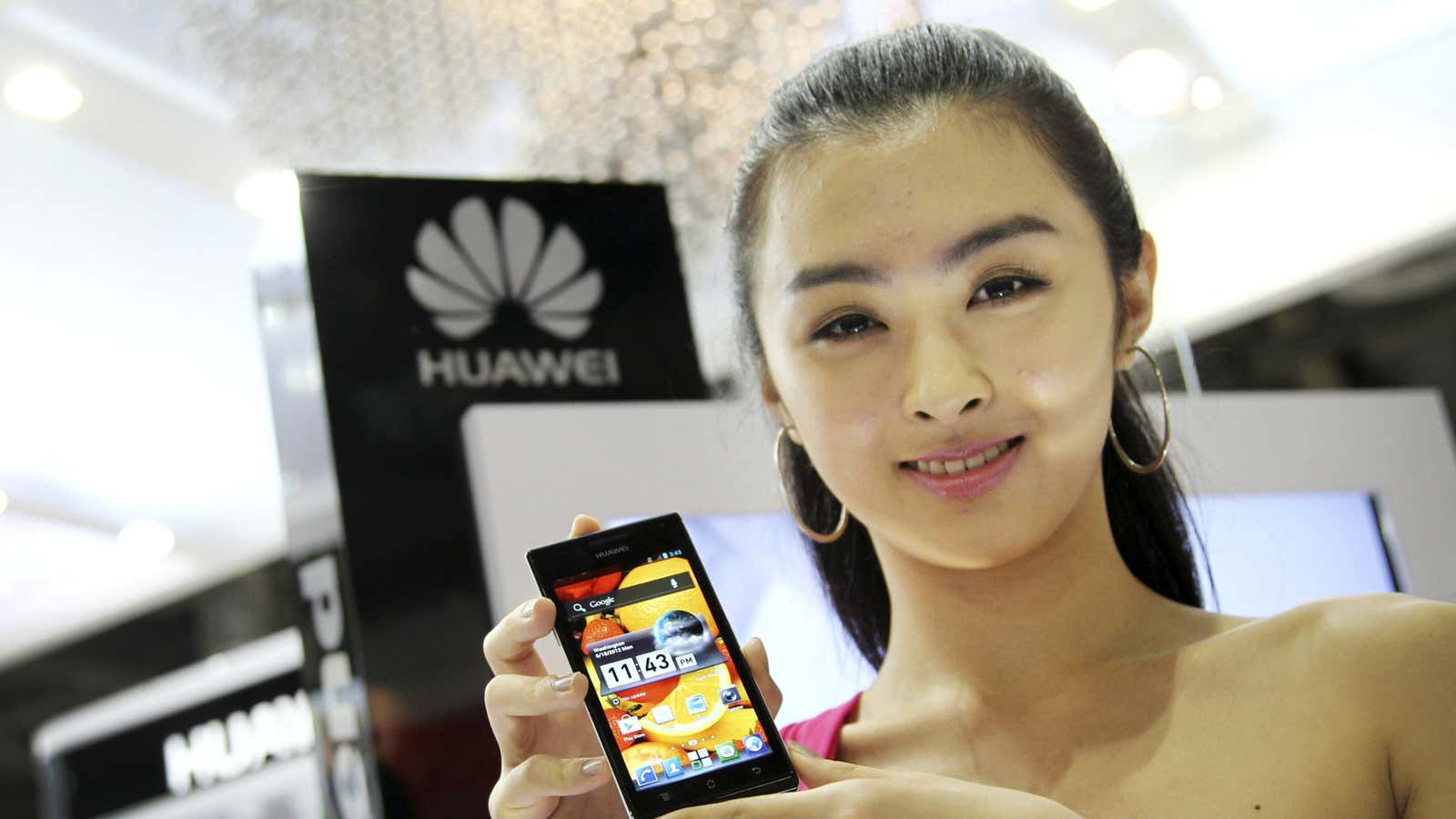Despite PR blunders and a tough-to-pronounce name, the numbers speak for themselves—Huawei is having a killer year selling smartphones.
The company claims that its smartphone sales for the first half of 2015 reached 48.2 million globally. Revenue for its consumer handset business, which includes smartphones, rose from $3.9 billion to $7.2 billion.
During the same period Xiaomi, another bang-for-buck Android vendor, shipped 34.7 million units for 33% annual growth, but its sales were flat compared to six months prior.
Of course, the two firms aren’t completely analogous. Huawei is available in Europe and the Middle East, while Xiaomi is not. Huawei has long-running relationships with telcos and brick-and-mortar retailers, while Xiaomi continues to aim for 70% of its sales online.
In China, Huawei has grown even as the average price for its phones has increased. Whereas its product line used to be priced below Xiaomi’s, it’s now priced well above, with an average unit price of $217.
Despite the price increases, the firm has maintained a respectable 11% market share in China
IDC’s Bryan Ma attributes Huawei’s growth in China to a strong brand perception. “There were user reviews saying people wanted a Huawei Ascend Mate7 because you could get network connection in a basement parking lot,” he tells Quartz. “That’s the sort of sentiment that’s been building in China… People are willing to pay for better product quality for prices that weren’t iPhone levels.”
Abroad, Huawei has earned remarkably strong traction. In Spain and Italy, for instance, it enjoys 10.9% and 9.2% marketshare, respectively. The company says 20 million of its 48 million smartphone shipments were outside of China. That makes it the world’s third-largest smartphone vendor of this past quarter, behind Samsung and Apple, according to Trendforce.
Moreover, Huawei’s traction abroad comes somewhat unexpectedly, given that it’s a perpetual poster boy for PR gone wrong. In the US, a fallout in Congress over security concerns sullied its brand image, and its phones have a market share of 1% there. Blunders with reporters and a suffocating corporate culture have also hindered its efforts to generate enthusiasm for the brand.
But its phones are selling regardless, likely due to a tried-and-true strategy: competitive pricing mixed with aggressive partnerships with telcos and retail outlets.




